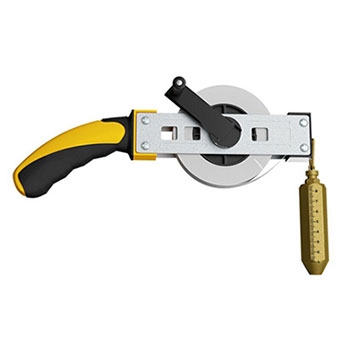Choosing the right oil gauging tape is critical to ensuring level measurement accuracy and quality control in the oil industry. Different types of oil gauging tapes are suitable for different application scenarios, so a range of factors need to be carefully considered in order to select the most appropriate oil gauging tape. Below is a detailed buying guide from the sisco online shop to help you choose the right oil gauging tape.
Determine Application Requirements
Type of Fluid: Different fluids may require different types of oil gauging tapes. Some liquids may corrode or affect the sensor, so a more adaptable oil gauging tape needs to be selected.
Accuracy Requirements: Different applications require different levels of accuracy. Some applications require very high accuracy, such as chemical process control, while others can accept lower accuracy.
Level Range: The level range of the liquid is an important factor in selecting an oil gauging tape. Some oil gauging tapes are only suitable for specific level ranges.
Environmental Conditions: Consider the environmental conditions of the application, such as temperature, humidity, and pressure. Some oil gauging tapes perform better in extreme environments.
Safety Requirements: Some applications may require an oil gauging tape with explosion or corrosion protection features to ensure safety.
Data Requirements: Whether real-time data monitoring, data logging, or remote access is required to meet the automation needs of the application.
Understanding the Different Types of Oil Gauging Tape
There are several different types of oil gauging tapes, each with its own unique operating principles and characteristics. Before making a selection, these types need to be understood to determine which is best suited for the application.
- Floating Oil Gauge Tape: Suitable for small vessels and tanks in applications where accuracy is not critical. Suitable for general level measurement.
- Capacitive Oil Gauge Tape: Provides highly accurate level measurement for applications requiring high accuracy and digital monitoring.
- Pressure Oil Gauge Tape: Suitable for applications that need to account for changes in liquid density, such as oil storage and refinery processes.
- Sonic Oil Gauge Tape: Provides highly accurate measurements for applications that require a high degree of accuracy, such as large storage tanks.
- Microwave Oil Gauge Tape: For applications requiring high accuracy, such as petroleum refining and chemical processes.

Choosing the Right Characteristics
- Material: Select a corrosion-resistant material suitable for the application environment to ensure that the gauging tape can operate stably for a long period of time.
- Length of Oil Gauging Tape: The length of the gauging tape should be appropriate for the level range you need to measure, as too short or too long may result in inaccurate measurements.
- Environmental Suitability: Ensure that the selected oil gauging tape can adapt to the temperature, pressure, and chemical characteristics of the application environment.
- Maintenance Requirements: Understand the maintenance needs of your chosen oil gauging tape, including cleaning, calibration, and parts replacement.
- Safety Standards: If the application requires compliance with specific safety standards, ensure that the selected oil gauging tape meets those standards.
Installation and Calibration
Mounting location: Select a suitable mounting location to ensure that the oil gauging tape is in contact with the fluid and protected from fluid shock or vibration.
Sealing: Ensure that the mounting area of the oil gauging tape is sealed to prevent leakage or evaporation of the liquid.
Calibration: Calibrate the oil gauging tape periodically to ensure its accuracy. Calibration can be accomplished by comparing the oil gauging tape's readings with the actual liquid level.
Regular Maintenance: The oil dipstick requires regular maintenance to maintain its performance and reliability. Maintenance includes cleaning, inspection, calibration, and parts replacement. Regular maintenance extends the life of the gauging tape and reduces the risk of failure.
Supplier Selection and After-sales Support
Choosing a supplier with a good history and reputation increases product quality and reliability. Ensure that the supplier provides adequate after-sales support, including repairs, warranty, and technical support. If unfamiliar with the operation of an oil gauging tape, choosing a supplier that offers training may be a favorable option. While cost should not be the only consideration, it is an important factor. Compare prices and performance from different suppliers to find the best value for money.
Selecting the appropriate oil gauging tape requires due consideration of application needs, environmental conditions, accuracy requirements, and safety. Understanding the different types of oil gauging tapes and their characteristics, and selecting applicable certifications and standards, are key steps in ensuring you choose the right oil gauging tape. Different types of oil gauging tapes, features, supplier selection, and after-sales support, as well as proper installation, calibration, and maintenance, will ensure the oil gauging tape you choose performs optimally in your application. This will help increase productivity, reduce risk, and ensure compliance.

